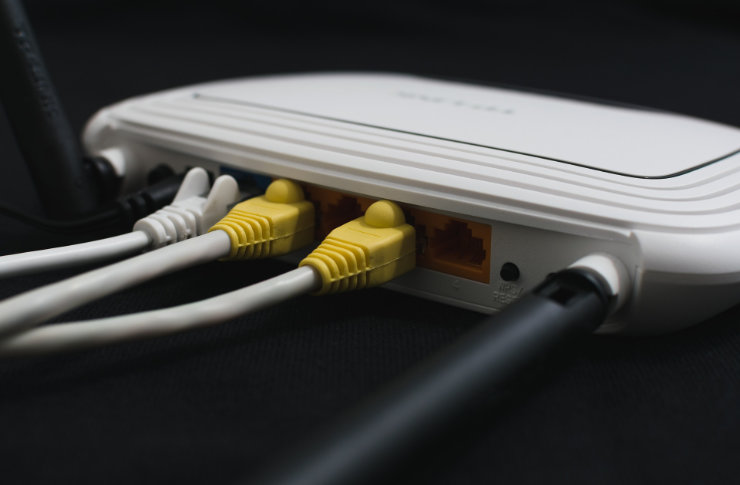From Dial-Up to Fiber: How Internet Providers Evolved
Explore how internet providers transformed connectivity—from noisy dial-up modems to blistering fiber networks and the rise of 5G. This in-depth look covers broadband’s role in remote work and streaming, why fiber is superior, how ISPs scale and secure networks, and what to watch when choosing a provider.

The world of internet access has been through a dramatic makeover over the past several decades. What began as slow, intermittent dial-up connections has evolved into a landscape dominated by broadband, fiber optics, cable upgrades, and wireless technologies. This shift has reshaped everything from where we work to how we entertain ourselves online.
How broadband changed online life
The arrival of broadband removed many of the constraints that defined early internet use. Higher and more consistent speeds unlocked practical remote work, real-time video conferencing, online gaming, and rich web applications. Businesses could move services to the cloud, creators could distribute high-resolution video, and consumers could stream without constant buffering. Broadband didn’t just increase speed; it enabled entirely new categories of online activity.
What makes fiber optic internet the gold standard for connectivity?
Fiber optic connections rely on hair-thin strands of glass or plastic that carry data as pulses of light. That physical difference translates into much greater throughput and lower latency than copper-based or coaxial systems. Fiber can support symmetrical upload and download speeds, a crucial advantage for businesses and power users who move large files or host services from home.
Beyond raw speed, fiber is resilient: it’s far less affected by electromagnetic interference, temperature shifts, or signal attenuation across long distances. These traits make fiber attractive for demanding uses such as 4K/8K streaming, cloud backups, remote desktop work, and competitive online gaming. As more applications demand simultaneous high-bandwidth access across multiple devices, fiber remains the most future-proof wired option available.
How internet providers are responding to growing demand
Providers are pursuing multiple strategies to keep pace with consumer and enterprise needs:
-
Network expansion: Many ISPs are extending their footprints into underserved and rural areas through public–private partnerships, government grants, and targeted buildouts. Expanding physical infrastructure remains the most direct way to close coverage gaps.
-
Technology upgrades: Where full fiber builds are impractical, providers upgrade existing networks with technologies like DOCSIS 3.1 on cable systems to boost capacity. At the same time, 5G wireless and fixed wireless access are being deployed to offer high-speed alternatives without extensive trenching.
-
Bundled offerings: To increase value and customer retention, companies often combine home internet with TV, phone, and mobile plans. Bundles can simplify billing and provide discounts, but consumers should compare features and total costs.
-
Enhanced customer support: As connectivity becomes mission-critical, ISPs are investing in faster fault detection, improved customer service channels, remote troubleshooting tools, and service-level commitments to minimize downtime.
What role does 5G play in the future of internet connectivity?
5G isn’t just a mobile upgrade; it promises ultra-low latency, higher capacity, and faster speeds that can rival wired broadband in many scenarios. For ISPs, 5G opens two major pathways: Use as a complementary service (e.g., mobile backup or hybrid home connectivity) or as a primary access method via fixed wireless access (FWA), especially in areas where fiber or cable deployment is costly.
There are challenges: spectrum availability, backhaul requirements, and performance variance across bands (low-band vs. mmWave). Nevertheless, 5G’s rapid deployment can bring high-speed access to communities that would otherwise wait years for fiber, making it a strategic tool for expanding coverage quickly.
How providers are addressing cybersecurity and privacy
As internet use grows, so does the attack surface. ISPs play an important role in protecting customers by integrating several defensive measures:
- Network-level protections such as firewalls and intrusion detection systems.
- Anti-malware and anti-phishing filters applied at the gateway.
- Optional or built-in Virtual Private Network (VPN) services to encrypt traffic.
- Regular firmware and security updates for modems and gateways.
- Investment in advanced threat intelligence, anomaly detection, and partnerships with cybersecurity firms.
Beyond technology, many providers run educational programs to teach users about safe passwords, two-factor authentication, and recognizing social-engineering attacks.
| Provider | Technology | Max Speed | Key Features |
|---|---|---|---|
| Verizon Fios | Fiber Optic | Up to 940 Mbps | Symmetrical speeds, no data caps |
| Comcast Xfinity | Cable/Fiber | Up to 2 Gbps | Wide availability, bundled services |
| AT&T Fiber | Fiber Optic | Up to 5 Gbps | High-speed options, no annual contract |
| Spectrum | Cable | Up to 940 Mbps | No data caps, free modem |
| Google Fiber | Fiber Optic | Up to 2 Gbps | Limited availability, simple pricing |
Prices, rates, or cost estimates mentioned in this article are based on the latest available information but may change over time. Independent research is advised before making financial decisions.
Looking ahead: what to expect from ISPs
The race to deliver faster, more reliable internet will continue along multiple tracks. Fiber deployments are expanding where demand and return-on-investment support the build, while cable operators squeeze more performance from existing plant via DOCSIS advances. Wireless solutions, including 5G, are closing the gap in underserved regions. Meanwhile, cybersecurity and customer experience are becoming central differentiators.
For consumers, the right choice depends on priorities: raw speed and stability favor fiber, broad coverage and bundled perks might point to cable, and rapid deployment or rural availability could make 5G or fixed wireless the best option. Whatever the path, internet providers will remain key architects of the digital experience—connecting homes, enabling remote work, and powering the next generation of online services.





